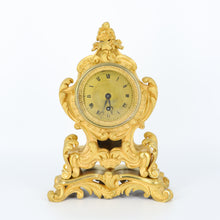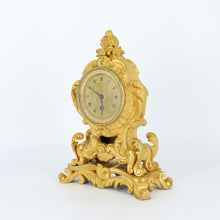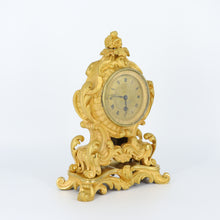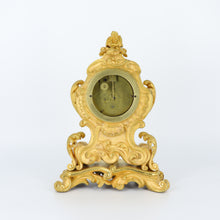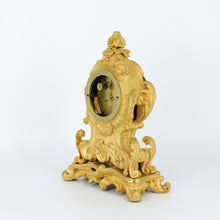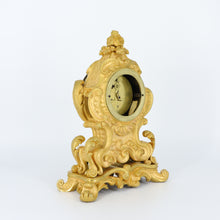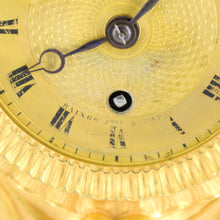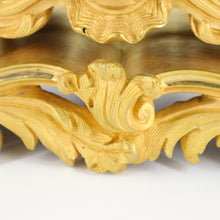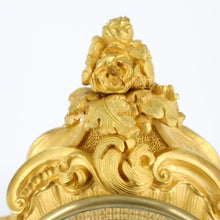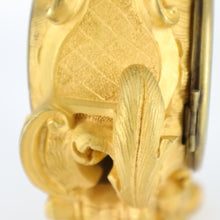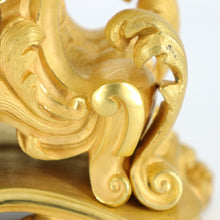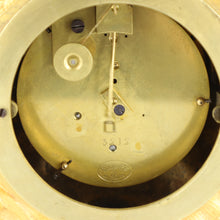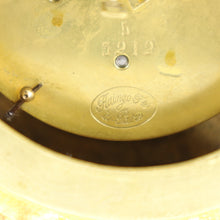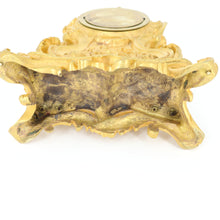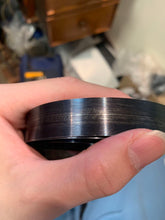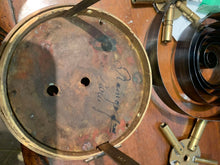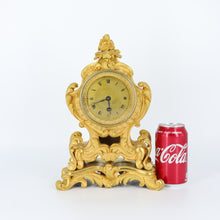
Overview
An antique Ormolu Mantel Clock made by Raingo Frères, circa 1830, with classic rococo style scrolled leaf and foliate decoration. The clock has a solid bronze case with lots of quality details, and an extremely fine gilding coat. The maker used gold with different caret to make contrast on the appearance of the clock. The clock uses silk suspension and is in fully working order, keeping perfect time. This is a stunning timepiece, of museum quality.
Highlight
- use gilding of different caret to make contrast and highlight
- extremely fine case and gilding, align with the quality of high end Raingo Frères clocks
- fully working, keeping perfect time
Details
- a 1-train clock (time only)
- 8 cm gilt dial with Roman numerals
- French round 8-day spring driven movement
- use Silk Suspension Movement
- signed backplate
- signed dial
- solid bronze case, very heavy for the size
- include a pendulum and a winding key
Period
- circa 1830, between 1813 and 1830.
- Raingo Frères was founded in 1813.
- maintenance on main spring dated 1830
Style
- mantel clock
- ormolu clock
- Rococo Style
Maker
- French
- case: Raingo Frères
- movement: Raingo Frères
- dial: Raingo Frères
Size
- 32 cm H / 21.5 cm W / 11.5 cm D
- 12.5 inch H / 8.5 inch W / 4.5 inch D
Material
- ormolu case
- brass movement
Condition
- overall excellent condition
- fully working, keeping perfect time
- extremely fine gilding
- extremely fine solid bronze case, very nice details
- some wear on Roman numerals on dial
Raingo Frères - Clockmaker Company (French, founded in 1813)
Raingo Frères is a famous French clockmaker that is well known for the fine quality of its ormolu, in particular their superb gilding and chasing.
The origins of the company Raingo Frères lie with Zacharie Joseph Raingo (1775 – 1847). Zacharie was a clockmaker specialized in creating astronomical clocks. One of his planetary pendulum clocks he made in 1824 was purchased by King George IV of England, and is now housed in Windsor Castle.
Zacharie had four sons, and together they formed Raingo Frères in 1813. The firm initially specialised in producing Empire Style and Restoration style mantel clocks, table clocks and cartels. By the mid-19th Century, Raingo Frères had expanded the range of their output into other bronzes and furnishings. In the 1860s, the firm supplied several clocks and bronzes to Emperor Napoleon III and his wife Empress Eugenie, which now form part of the collection at the Louvre Museum.
Such commissions enhanced the reputation of Raingo Frères, which became internationally recognised for the very fine quality of their bronzes and gilding. The firm exhibited at the most important exhibitions of the second half of the 19th century, winning a gold award at the 1889 Exposition Universelle in Paris.
Raingo Frères commonly marks their work “Raingo Frères”.




















